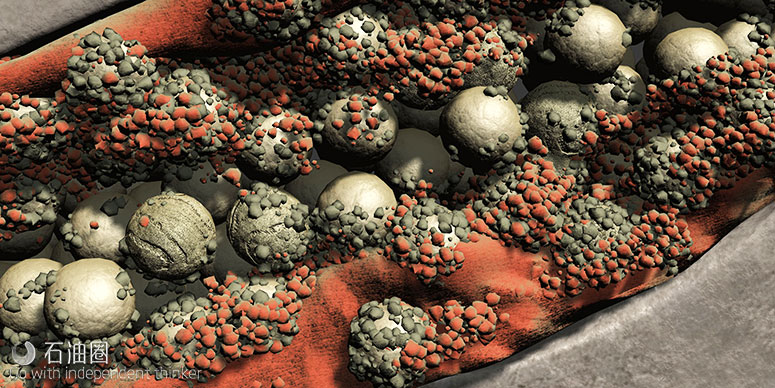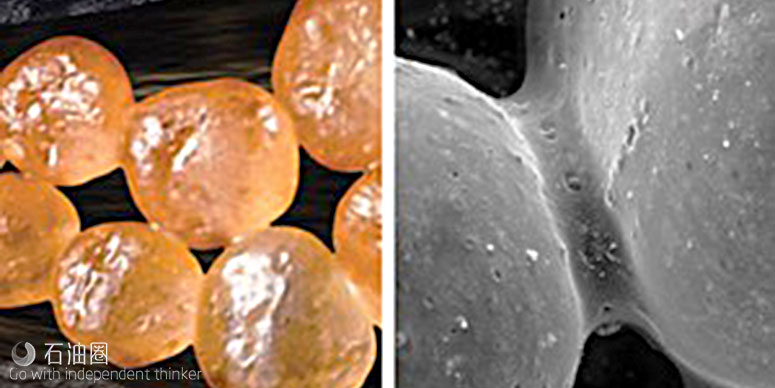Rapid changes in oil and gas pricing have necessitated that operators find new ways to reduce the cost per boe, to improve their well economics. Consequently, operators are focusing on incremental well production and decreasing well operating costs. Proppant suppliers, such as Hexion, are thus striving to develop new technologies that increase well production and lower costs, to help optimize well productivity.
Traditional, resin-coated proppants provide solutions that include reducing proppant flowback, proppant fines and embedment. The industry’s leading operators are looking beyond these benefits, for technical solutions that can improve wells’ estimated ultimate recovery (EUR) and reduce well operating costs.
OPERATING IN A LOW-PRICED ENVIRONMENT
Motivated by the desire for higher financial returns, and fueled by the rise of innovative technology, optimization efforts have become the standard operating procedure for most operators. Thus, several new trends have emerged.
Optimization of proppant volume. Many operators in North America have been increasing the average proppant volume pumped, per foot of lateral length. A Permian basin operator increased proppant volume from 600 lb/ft to 1,600 lb/ft, and 30-day IP rates increased 60%. The company is testing as much as 3,000 lb of sand per lateral foot, in an effort to lower cost per boe.1 Increasing the average proppant volume pumped, per foot of lateral length, results in more cumulative boe per well.
Minimization of proppant flowback. It is important to address proppant flowback, due to the costs associated with damaged equipment, downtime associated with repairing or replacing equipment, and impact to fracture conductivity. Operators are focusing on minimizing the costs associated with proppant flowing back out of the formation and are taking steps to prevent it.
Maximization of fracture conductivity. The proppant pack is a porous medium, so resistance to flow—which manifests as reduced conductivity—arises from a combination of residual gel damage, fines migration, multi-phase flow, drag forces, capillary forces, proppant crushing, proppant embedment, proppant flowback and fluid momentum losses (β factor).2 These issues must be addressed properly to maximize conductivity.
Stimulation of microfractures. The use of 100-mesh frac sand, carried by a low-viscosity, slickwater frac fluid at a high pump rate, is recommended to stimulate far-field microfractures.3
RESIN-COATED PROPPANTS’ BENEFITS
Selecting the proppant best suited for the completion design is critical. Proppant selection can be a major component to well success, as it is the proppant that stays downhole for the life of the well. While uncoated frac sand can perform in shallower wells, it does not address proppant flowback, fines generation, embedment, pack rearrangement or cyclic stress. Curable resin-coated proppants have the ability to form grain-to-grain bonds, which can help solve these issues, due to their ability to create a unified proppant pack.
Proppant flowback control. Proppants, such as uncoated frac sand and ceramics, have a tendency to flow out of the formation once a well is put on production. If proppant comes out of the fracture near the wellbore—where the fluid velocity is highest—fractures can pinch off near the perforations, leading to underperformance of the entire zone.
Proppant flowback can cause deposition of proppant in the lateral wellbore, leading to costs associated with cleanout and other remediation. Damage to electronic submersible pumps, for example, leads to costly repairs and downtime.
Curable resin-coated proppants mitigate proppant flowback by creating a unified, bonded proppant pack, which holds the proppant in the formation. Operators often utilize curable resin-coated proppants as “tail-ins” to hold uncoated proppants in the fracture, due to this feature.
A case study compared 34, 100%-uncoated frac sand wells and 35 wells that used a curable resin-coated sand tail-in in Dimmit and Zavala counties, Texas. The results showed that curable resin-coated proppants are an effective means of controlling proppant flowback. Failures—due to proppant production—were reduced significantly, because of the use of curable resin-coated proppants.4
Reduced proppant fines improve fracture porosity, permeability. The crushing of proppant grains can lead to a decrease in fracture width and the generation of small broken pieces, known as proppant fines. These proppant fines can migrate through the proppant pack and block pathways for oil and gas to flow. Generation of 5% fines can reduce conductivity in the proppant pack by 60%.5
The resin layer on resin-coated proppants encapsulates any broken substrate pieces and immobilizes them, thus preventing migration throughout the proppant pack. Curable resin-coated proppants also create a unified, bonded proppant pack, that can distribute the force being exerted on individual grains, which leads to fewer proppant fines.
Cyclic stress and proppant pack integrity. Cyclic stress events can occur multiple times during the life of the well, when it is shut in for workovers, pipeline connection or other activities. These changes in closure stress can result in greater generation of proppant fines when uncoated proppants are used. A recent study concluded that cyclic stress reduces proppant pack conductivity, decreases fracture width, and increases the amount of proppant fines generated.6
Therefore, we know that the unified proppant pack of curable resin-coated proppants will resist rearrangement and maintain conductive pathways for oil and gas to flow. The bonded proppant pack withstands the cyclic stress changes by distributing the force throughout the bonded lattice network, resulting in less proppant fines.
Reduction of proppant embedment in the fracture face. As fracture closure stress on proppants increases, uncoated frac sand and ceramics can experience point-loading on individual grains. This can result in the embedding of the proppant into the formation rock, especially in softer shales. When proppants embed in the formation, fracture width is reduced, resulting in less production.
Since curable resin-coated proppants bond together and create a unified proppant pack, force is distributed throughout the pack, preventing point-loading on individual grains and reducing embedment.

 石油圈
石油圈

